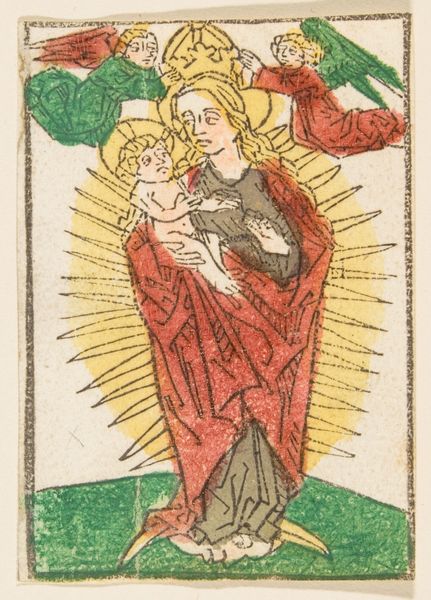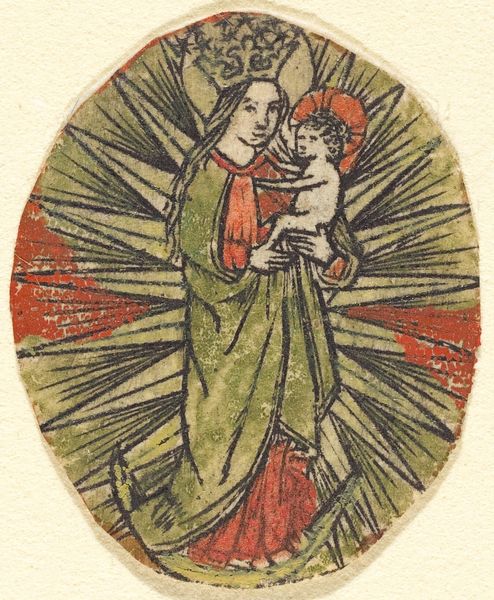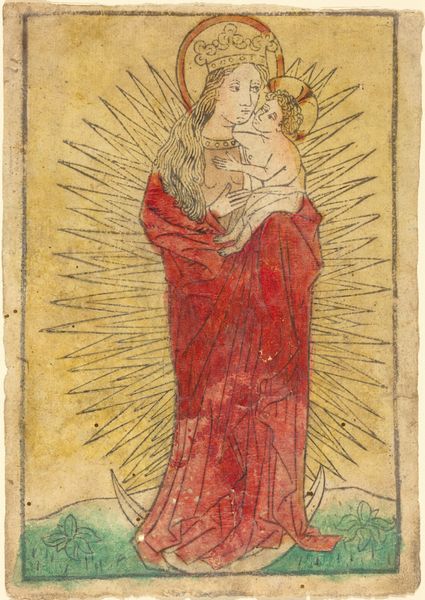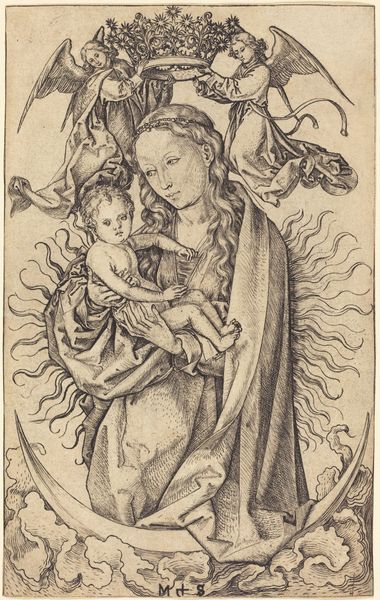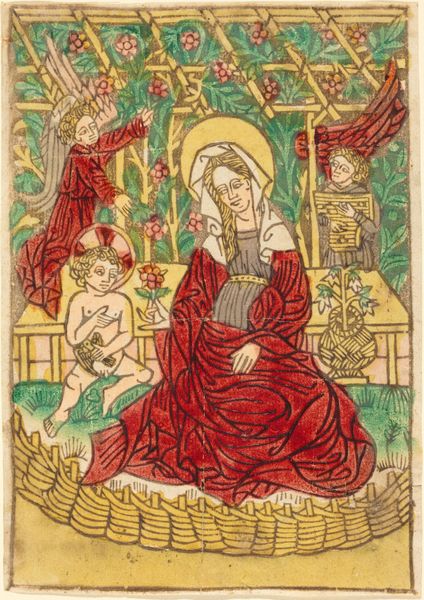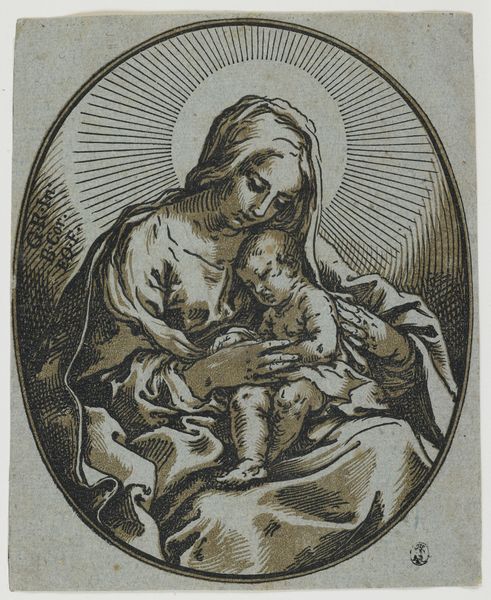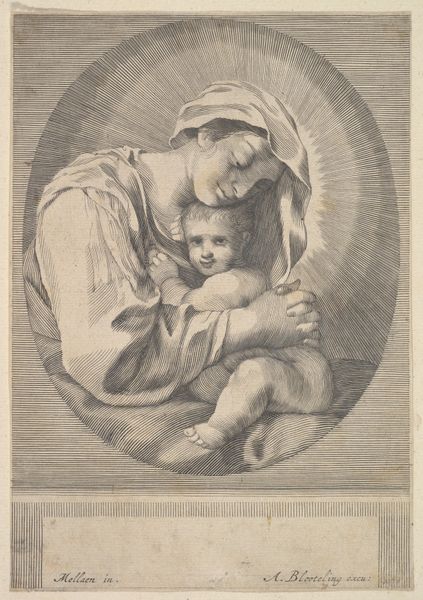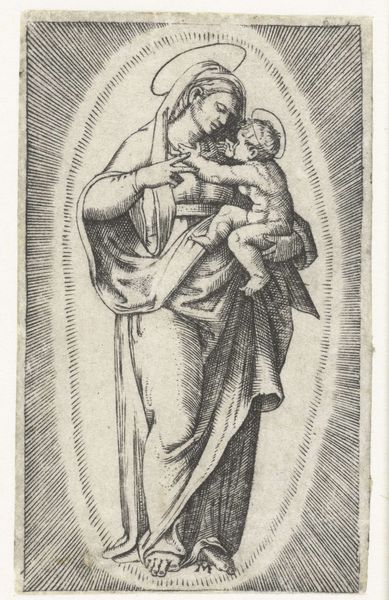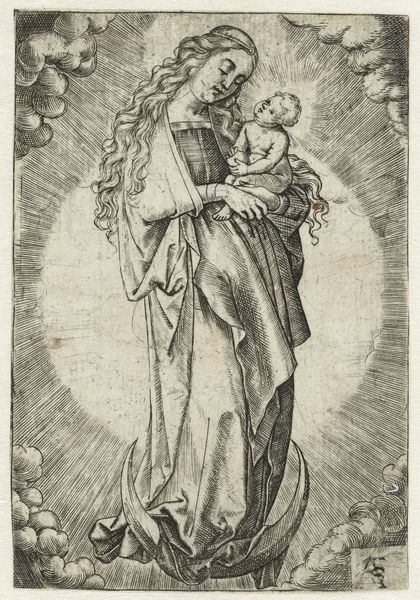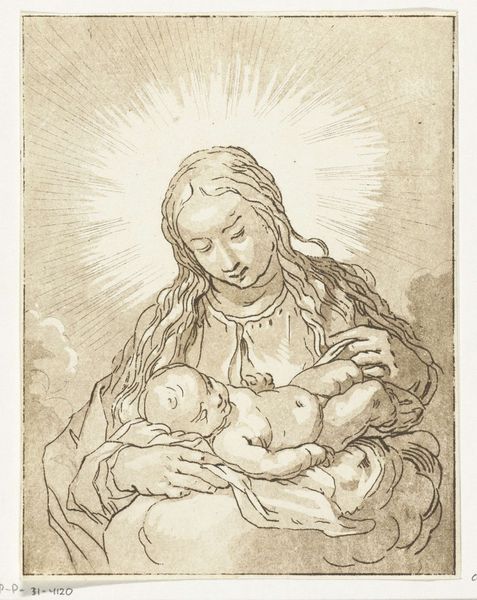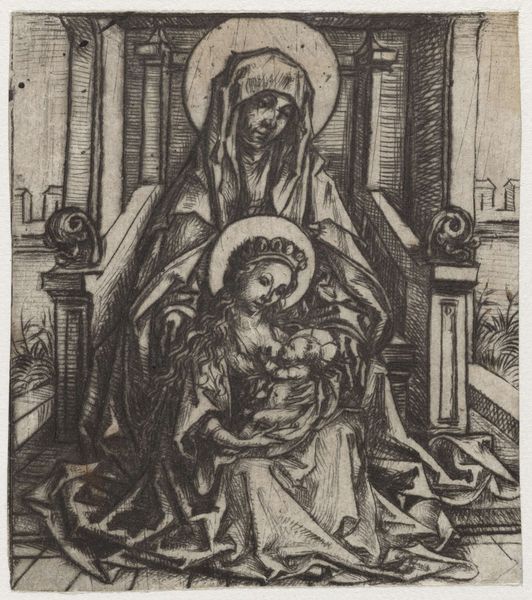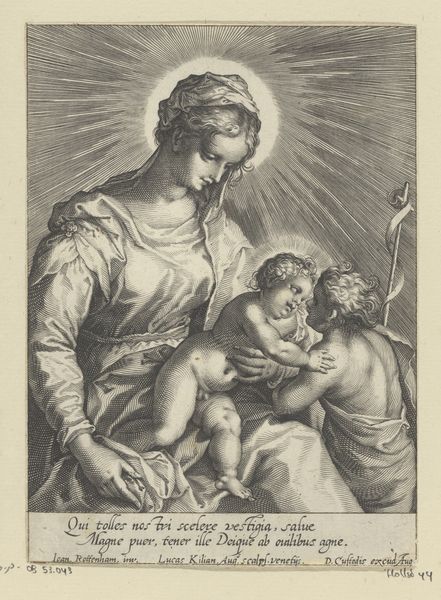
#
portrait
# print
#
figuration
#
northern-renaissance
#
miniature
Dimensions: plate: 8.5 × 6.2 cm (3 3/8 × 2 7/16 in.) sheet: 8.9 × 6.2 cm (3 1/2 × 2 7/16 in.)
Copyright: National Gallery of Art: CC0 1.0
Editor: This lovely print, dating back to 1440-1460, is titled "The Madonna and Child with a Pear," created by an anonymous artist. The colors are muted, yet striking, particularly the sunburst emanating from behind the figures. What stands out to you as you view this piece? Curator: The sunburst is definitely significant, isn't it? This print speaks volumes about the public role of religious imagery during the Northern Renaissance. It suggests how prints democratized access to sacred art. Previously, such imagery was mainly confined to wealthy patrons or churches. Do you notice anything else? Editor: I do! Look closely. What’s with that small, seemingly incomplete, human-like head underneath them? Curator: Excellent observation! That partially rendered face at the bottom symbolizes the defeated serpent, or evil, under the feet of the Madonna and Child. Consider the context of the rise of printing—it became a powerful tool for religious instruction. These images reinforced established doctrine but, fascinatingly, also potentially offered a medium for new interpretations. It raises questions about agency and viewership, doesn't it? How did people *use* these images in their lives? Did everyone read the symbolism in the same way? Editor: I hadn't considered the potential for multiple readings! Were these prints commonly displayed in homes or used in some other fashion? Curator: Often, yes. Their portability meant they could be used for personal devotion, travelling, and teaching. Remember, art's "meaning" isn't inherent but shaped by social practices. It also appears someone later colored it, too. Notice how roughly it was done? Editor: That’s true! The context you've provided helps to illuminate the work beyond just its aesthetic qualities, reminding us about their original audiences and potential functions. Curator: Exactly! Thinking about the socio-political aspects gives us insight to the reception and adaptation to these types of pieces through time.
Comments
No comments
Be the first to comment and join the conversation on the ultimate creative platform.
